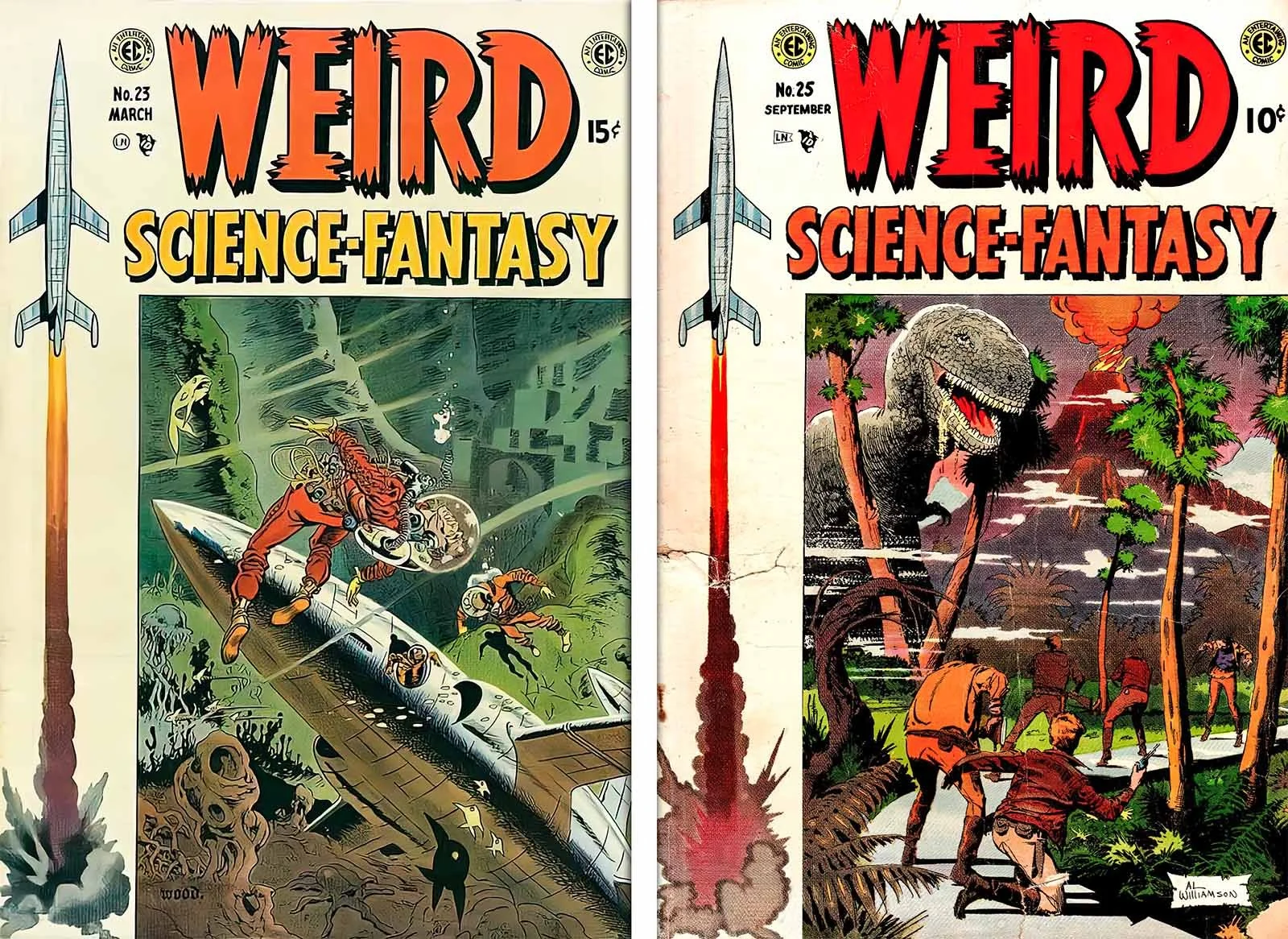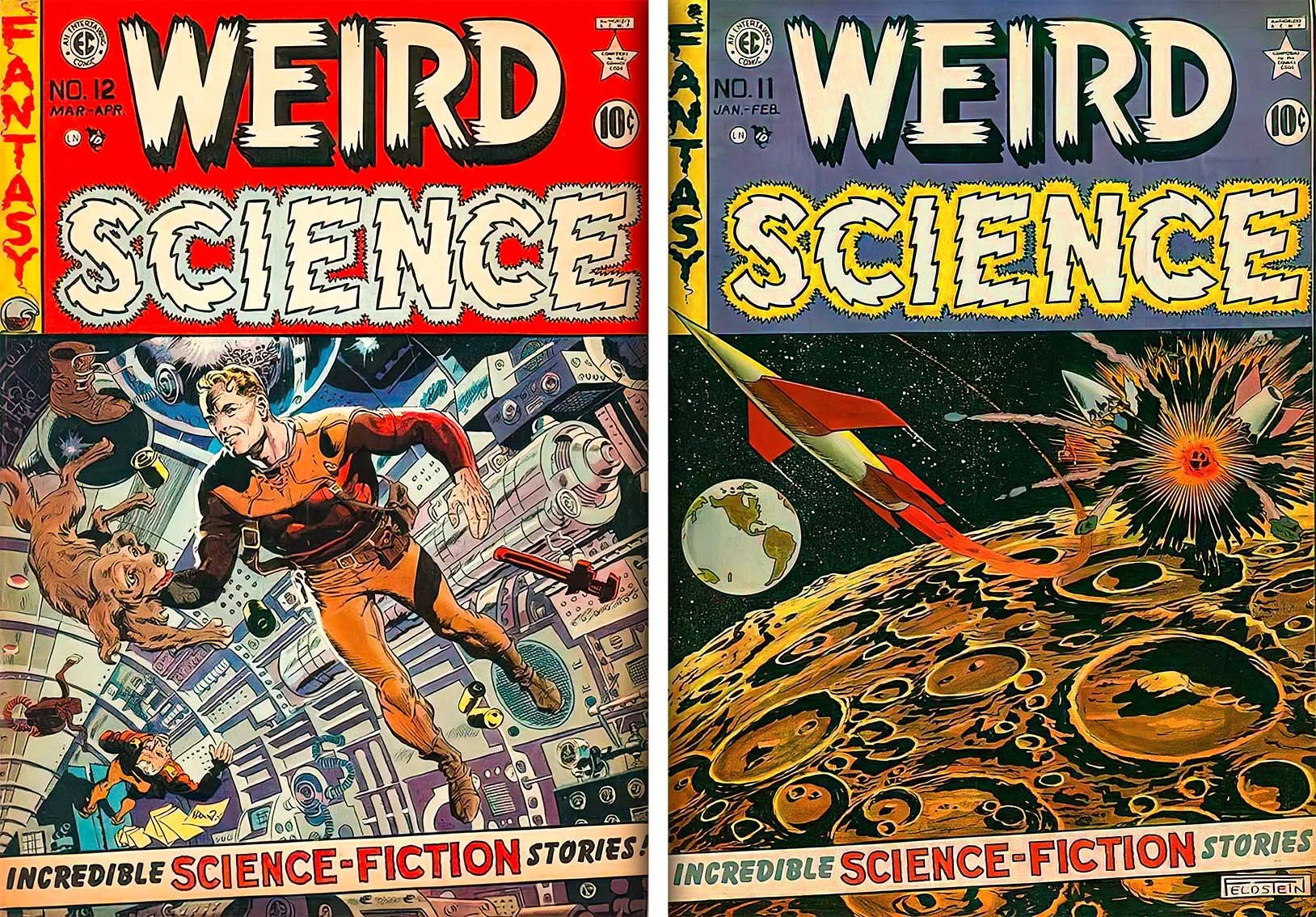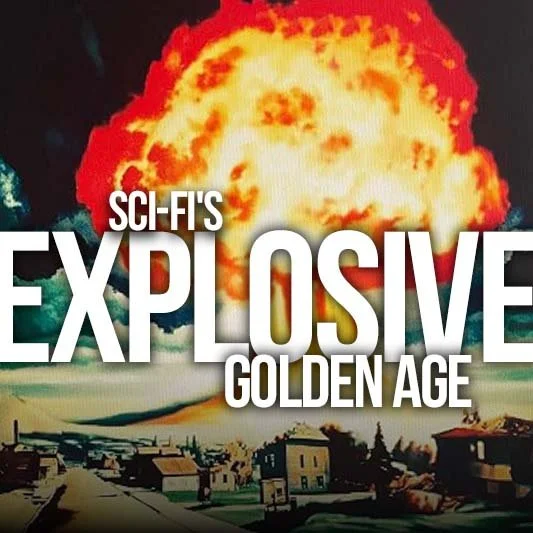Stapled Cosmic Dreams
Sci-fi in pulps and panels
Long before science fiction conquered movie screens, it thrived in pulp magazines and comic books. These illustrated tales were bold, bizarre, and often more subversive than anything allowed in mainstream film or literature.
The vibrant world of 1950s sci-fi publishing—where serialized stories, strange art, and controversial ideas fueled imaginations, challenged authority, and helped shape the language of modern science fiction.
-
Pulp magazines and comics were major platforms for science fiction in the 1950s.
Writers and artists used the format to explore bold, sometimes controversial ideas.
EC Comics stood out for their shocking, socially aware sci-fi stories.
Censorship via the Comics Code Authority silenced many daring titles by mid-decade.
The visual and narrative style of pulp sci-fi helped define the genre’s lasting iconography.
Science fiction in the 1950s wasn’t confined to theaters—it was sold at corner drugstores, smuggled into classrooms, and devoured by flashlight under the covers.
Pulp magazines and comic books were where the genre truly cut loose. Here, freed from the constraints of Hollywood budgets or social decorum, sci-fi got weird—and wonderful.
This article focuses on the loud, wild, and colorful side of sci-fi’s printed world—not the more serious literary works being published in hardcover and paperback during the same period. While authors like Arthur C. Clarke and Isaac Asimov were crafting sophisticated novels, the pulp pages and comic panels delivered their own kind of brilliance: fast-paced, visually stunning, and often subversively smart.
Magazines like Amazing Stories, Galaxy Science Fiction, and Astounding offered serialized adventures that stretched the imagination. These weren’t just monster-of-the-week thrillers; they were experiments in language, philosophy, and satire. Authors like Isaac Asimov, Ray Bradbury, and Philip K. Dick cut their teeth here, publishing mind-bending tales that questioned everything from the nature of consciousness to the ethics of government control.
Comics took a visceral route. They were short, sharp, and often disturbingly ahead of their time.
Meanwhile, comics took a more visceral route. EC Comics' Weird Science and Weird Fantasy pushed boundaries with grotesque art, ironic twists, and unexpectedly moral conclusions. Their stories were short, sharp, and often disturbingly ahead of their time. One infamous EC story featured a peaceful alien envoy shot by fearful humans—only for readers to discover he was Black under his helmet. For a comic released in 1953, that was revolutionary.
But boldness had consequences. In 1954, the U.S. Senate Subcommittee on Juvenile Delinquency targeted comic books for corrupting youth. The Comics Code Authority was born, and with it, a chilling wave of censorship. EC’s sci-fi titles folded or watered down. The wildness retreated—but the impact was already made.
Sci-fi stories didn’t just entertain—they trained a generation to think critically, imagine boldly, and question authority.
What set sci-fi in print apart wasn’t just content—it was accessibility. For a few cents, anyone could travel to distant galaxies, battle rogue robots, or encounter moral dilemmas far beyond the scope of their daily lives. These stories didn’t just entertain—they trained a generation to think critically, imagine boldly, and question authority.
In many ways, the aesthetic of 1950s pulp and comics—oversized ray guns, chrome helmets, strange fonts—became the visual shorthand for sci-fi as a whole. It was fast, fearless, and never boring.
While Hollywood chased rockets and rubber suits, 1950s print sci-fi went deeper. These comics and magazines weren’t just entertainment—they were engines of cultural provocation, disguised as pulp. Though many titles were silenced, the echoes of their bold storytelling still ripple through the genre. Look closely at today’s sci-fi, and you’ll see ink-stained fingerprints all over it.














How the look of the future shaped the way Americans dressed, built, and lived.